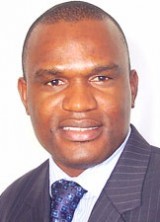| TRANSFORMING LEADERSHIP | |
| BY TRAINING GREAT LEADERS |

|
|
|
| THE PLAN - LEAD - EXCEL LETTER |
| Newsletter Home | Bob's Thoughts | Guest Column | Review | Useful Links | Newsletter Archives | Plan-Lead-Excel Home |
PLANNING TO EXCEL: STRATEGIC PLANNING THAT WORKS Get your copy now and Plan to Excel! PREPARING TO LEAD 
|

Leadership and Followership One of the techniques used in a leadership training course I attended were games governed by a myriad of odd rules, the only real purpose of which was to make the game difficult to play. One of the prime results of these rules was extreme difficulty in achieving or maintaining any momentum. Even if one team was able to gain a little momentum, the rules were structured so that the other team could break a rule, causing the game to stop, only momentarily, but long enough to bring both teams back to a sort of equilibrium. That was extremely frustrating for a group of people who are motivated to win! An interesting development in playing the games was that as the teams became more familiar with the peculiar and seemingly endless rules, it became easier for them to maintain the desired forward movement. These games demonstrated a simple fact of life; it's easier to achieve a team's goals if that team is able to gain and maintain momentum in the right direction. Unfortunately, as leaders we often allow outside influences to derail us from our real goals and objectives. Also, unfamiliarity with the rules can make winning difficult. In the context of leadership I'm really referring to two sets of rules. First are the various laws and directives that govern our business practices. Leaders know they should be familiar with these, but they are many and varied making it difficult to truly be an expert. It's important though for leaders to have at least a rudimentary understanding, and gather around them experts who can help them navigate these often tricky waters. Read this article... |

What Every Follower Wants in a Leader In my years of holding leadership positions, and as a leadership trainer and consultant, I have come to realize that what followers want in their leaders are almost the same across race, culture or gender. I still remember back in the days as a student leader in the university, I was voted the Chairperson of one of the most popular residence on campus. In fact, it was a huge responsibility because all eyes were on me to perform and meet the needs of the students. One thing I realize then was that, Elvis, if you truly want to survive in this leadership position, you have to pay close attention to the needs of your followers. Some of the lessons I learnt back then, coupled with my present leadership position, are what I'm about to share with you right now. One thing is to assume the position of leadership, and another thing is to actually take the lead as a leader. And as the saying goes, "if you are leading and no one is following, then you are actually taking a walk alone". Your success as a leader can only be judged by those you are leading and not yourself. Below are some of the things followers want in a leader. Read this article... | ||
|
Plan for success With all the despair and train your leaders to lead! |
No U. S. President before or since has faced the leadership challenges of Abraham Lincoln. He did not have an auspicious life prior to his election. A modicum of success in his small Illinois law practice was in sharp contrast to a somewhat unsuccessful background in business and politics. Destined to lead be the active leader of the U.S. military in war, he had no real military experience. We're told his voice was a higher pitch than was normal for politicians and he was often described as "homely". Letting none of this bother him, he ran for election to the office at a time which when events seemed certain to spell the end of the union. In Lincoln on Leadership, Donald T. Phillips masterfully captures Lincoln's leadership style with which he successfully re-united the country. Lincoln's presidency began in conflict as he was secreted into Washington amid threats to his life. The question of slavery had been festering since the days of the founding and Lincoln's predecessor, Buchanan, had all but given up trying to resolve the issue. By the inauguration of the 16th president, the die was cast and war was certain. Read the entire review. |
A QUESTION ON LEADERSHIP Why should I have to say "please" and "thank you" to someone I pay? Anonymous Albuquerque, NM You don't! In fact many leaders don't. You can usually tell which ones by watching their followers. Usually, the followers of such leaders will be the ones who don't do anything extra, and don't have a lot of loyalty for the boss. In fact, in times past it was fairly unusual for a leader to feel the need for such courtesies. In more modern times though, enlightened leaders realize that workers respond better when they are actually treated like valuable human beings. Those enlightened leaders also understand that not only do such pleasantries not diminish, but may actually enhance their standing. So, you don't have to say "please" and "thank you" if you don't want to. But, remember the golden rule. In case you've forgotten, that's "Do unto others as you would have them do unto you." | ||
| New!! Mini-Books are designed to make a lot of information available in a short, concise resource. They contain facts, tips, and techniques with only limited stories and illustrations. |
Kelly was the manager of a small, non-profit organization that was dedicated to raising money for various charitable organizations. As she assumed her new role, she realized that the organization had significant problems and in order to become effective again, some changes would be required. She carefully evaluated the situation and listed where change would be necessary. With a plan in mind, she sat down with the other members of the organization and explained what she saw as the problems, reviewed the direction she believed the organization should go, and then asked for suggestions. Most in the group where supportive and the meeting resulted in a new direction for the organization. Though most supported the changes, a few felt the organization was doing just fine and didn't need the changes. They had been with the organization for a long time and were not anxious to see changes. Some were concerned with the effects the changes might have, especially on them. Others agreed that a new direction would be helpful. She carefully addressed the concerns of dissenting members. She won most of them over and they agreed to give the changes a chance. A couple of members were not as easy to convince, but Kelly proceeded to implement the changes anyway. The changes were successful, but whenever she talked to others, she was always careful to say that the success was because of the group's efforts, not her own ideas. What steps do you think made Kelly successful? What would you have advised Kelly to do if the majority of members had been opposed to the changes she felt were necessary? This case study is designed to make you think. Take a look at my answers. They aren't neccessarily right or wrong, just what my experience has taught me. Do you have a different approach? If you disagree or would like to add something send me a comment at comments@www.planleadexcel.com | |||
Follow Me! | |
| RLM PLANNING AND
LEADERSHIP PO Box 50984 Albuquerque, NM 87181-0984 866-243-1682 www.planleadexcel.com email rlm@planleadexcel.com PLAN - LEAD - EXCEL | |